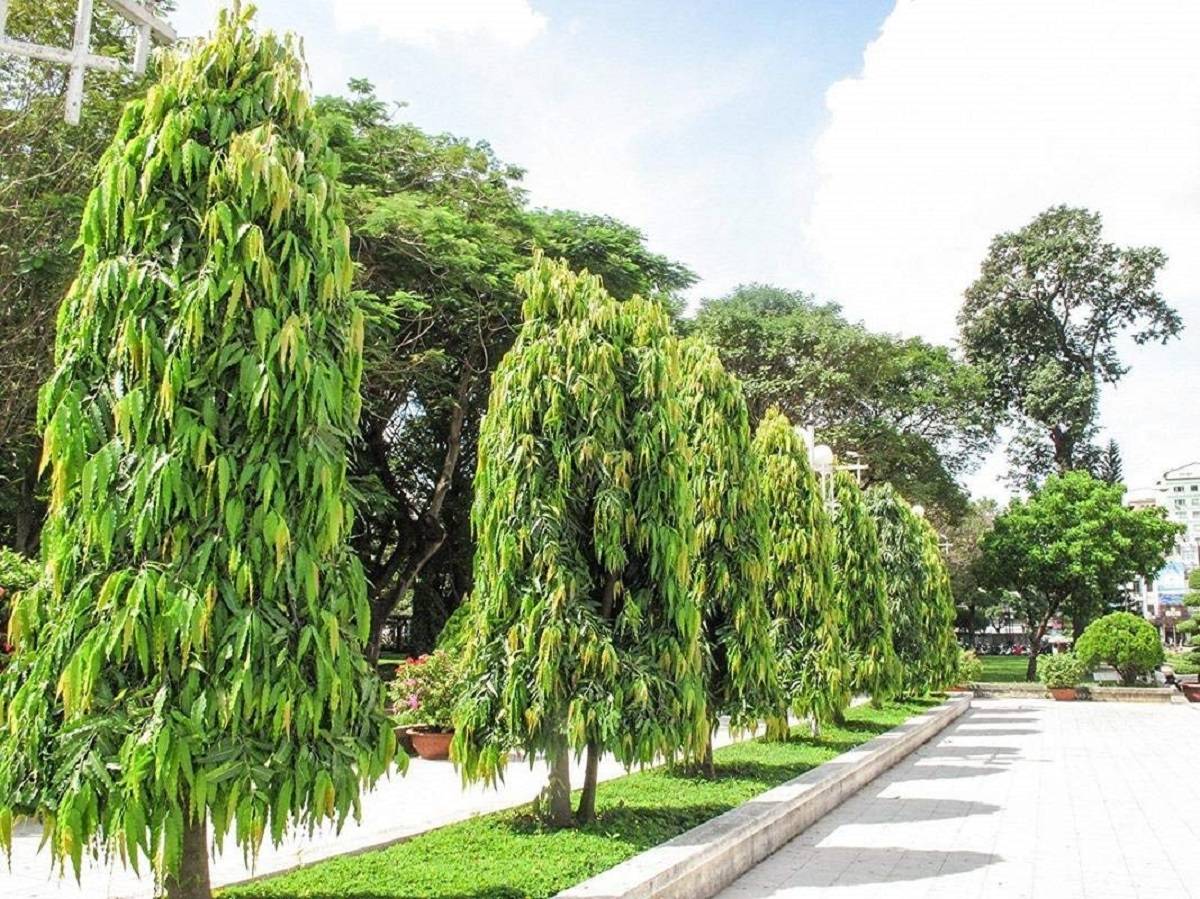
The Ashoka plant, also known as Saraca asoca, is well known for fostering happiness and optimism in the home and is important in many different ways. This tree has a significant place in the history of India.
Ashoka is a 22–30 foot tall, evergreen tree native to India, Myanmar, and Sri Lanka with fragrant blooms. This rainforest tree features glossy, green leaves that are coppery-red at first, then become green and eventually develop deep green as they mature. Orange-yellow, scented blooms on this attractive tree progressively turn crimson after getting drooping. Although blossoms may be seen all year round, the greatest blossoming season is from February through April.
Botanical name: Saraca asoca
Also known as: Sorrowless tree, Sita Ashok, Asokamu, Jasundi, Asogam, Ashoka tree, Buddha tree, Indian mast tree, and Indian fir tree
Best Season to Grow: Spring
Growing and maintaining difficulty level: Easy to grow and maintain.
Ideal temperature: 16 to 32 degrees Celsius.
Soil type and pH: Well-drained. The soil should be fertile and abundant in organic matter.
Ideal locations for placement: home gardens and offices. Also commonly used as a landscape tree.
Requirements for Growing Ashoka Tree
For optimal development, the Ashoka plant needs medium to deep, rich soils that are neutral to slightly acidic and well-drained.
In subtropical and tropical environments, the Ashoka plant thrives.
Both seeds and stem grafting can be utilized to spread the crop.
During the wet season, seedlings can be planted in a fertilized field.
How to Get Seeds
The easiest and most practical way to raise the Ashoka plant is from seeds. They may be obtained from the fruits of an Ashoka tree that is 6–8 years old or purchased at your neighbourhood nursery. It blooms from February to April on the Ashoka tree. In addition, from June to August, a bean-like fruit grows and matures. Collect the plant’s fruits, which are purple-black pods with four to eight seeds each. Rinse the seeds and soak them in water overnight.
Planting the Ashoka tree seeds
To grow a plant in a pot, use a container with drainage holes and an upper diameter of 7 to 10 inches. Fill the remaining third of the container with organically rich, well-drained soil before putting the plant in the centre. The same dirt should be used to fill the last container. After a few days in an atmosphere with indirect bright light, gradually move the plant to a spot with more than six hours of direct sunshine. Transplant the plant to a field once it has outgrown its current container.
How to take Care of Your Ashoka Tree?
Sunlight
This tree thrives in a location that is both sunny and shaded. Although partial shade or full shade are equally good, it does not favour full sun exposure.
Water
Check the soil nearby for developing little plants by sticking your one and a half-inch finger into it; if the soil seems dry, water it. You may also add drip irrigation to offer precise watering if your yard is large enough.
Soil
The soil requirements for Ashoka trees are rich, well-draining, pH 5-7.5, slightly acidic to neutral. For growing Ashoka trees, loamy, sandy loamy, or clay-loamy soil is ideal.
Temperature
It thrives in climates without frost, where temperatures vary from 20 to 35 °C (68 to 95 °F). The tree does best in wet environments and does badly in dry, arid climates.
Fertilizers
Mature Ashoka trees rely entirely on the soil for all of their nutritional needs, they do require heavy feeding. When an Ashoka tree is developing, organic fertiliser is the best type to use. It is available for usage twice a year, in May and June and then again in October and November.
The Ashok tree's spiritual importance
The Ashoka tree appears in several mythologies and religious stories. According to Buddhist scriptures, Lord Buddha was born close to Sakyan queen Maya under the Ashok tree. The Hindu Ramayan Mahakavya claims that when Sita was kidnapped by Ravan, she fled to Lanka and stayed in the shade of Ashoka trees. Hindus also honour Kamadev by giving him their lovely blooms.
Ashoka can be consumed in a variety of forms for a variety of medicinal conditions, including seed powder, juice, decoction, tablets formed from the processed leaves of the Ashoka plant, and paste. The Ashok plant may be utilized in numerous ways, depending on the circumstances.
Benefits of having Ashoka tree in your home
-
Gynecological problems, depression, women's problems, haemorrhages, diabetes, stomach problems, and muscular spasms can all be successfully treated using Ashoka tree extract.
-
Use dried stems, bark, and blooms to treat diseases and discomfort. In India, several tonics and containers are made from the tree's seeds, bark, and flowers in an effort to cure a variety of health issues.
-
The tree is also helpful in reducing the risk of kidney stone occurrence and alleviating infectious contamination, worm illness, skin consumption, hypersensitivities, blood clotting in the body, and looseness of the intestines.
-
The tree's bark is used to create a variety of healing products that help to improve the skin's composition.











